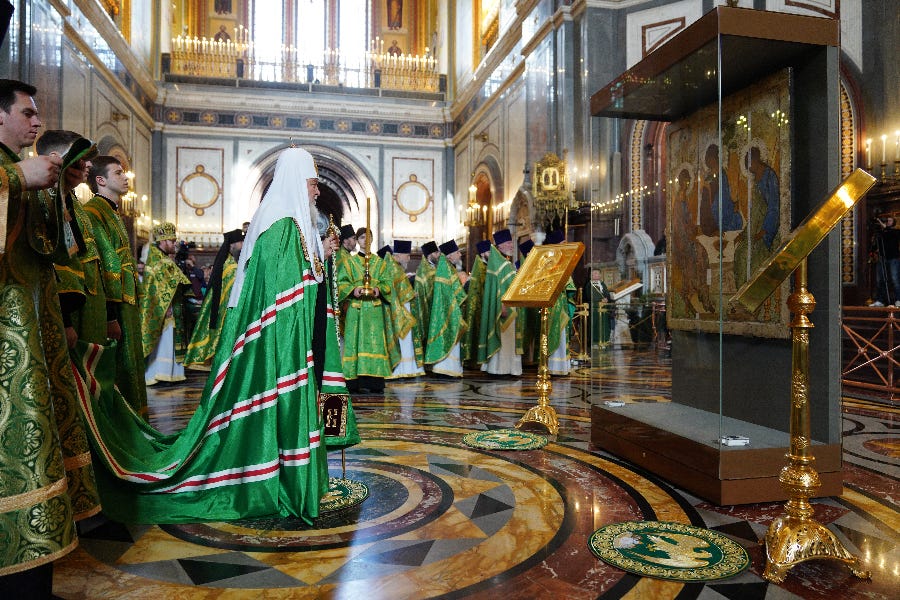Trinity icon venerated in Moscow cathedral as war rages
Andrei Rublev’s 15th-century icon was transfered from an art gallery at the behest of Russian President Vladimir Putin.
One of the world’s most renowned depictions of the Holy Trinity was venerated in Moscow’s Cathedral of Christ the Savior Sunday following the intervention of Russian President Vladimir Putin.

